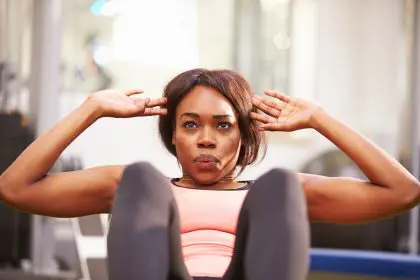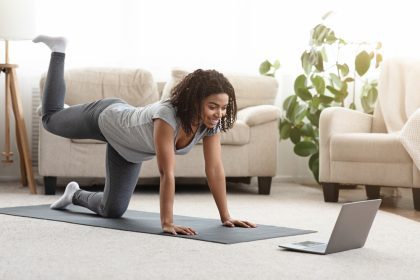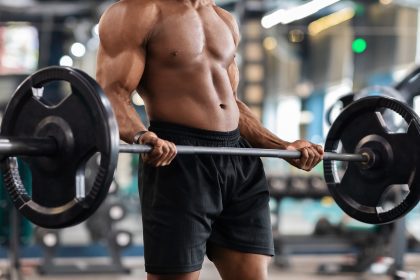The fitness industry thrives on convincing consumers they need the latest high-tech equipment to achieve optimal results. With home gym setups often costing thousands of dollars, many fitness enthusiasts assume expensive means effective. However, research increasingly shows that simple, equipment-free exercises performed at home can actually deliver superior results compared to their machine-based counterparts.
The humble push-up beats chest press machines
The traditional push-up might seem basic, but research from the American Council on Exercise found this bodyweight exercise activates more muscle fibers than expensive chest press machines. When performed correctly, push-ups engage not only the chest muscles but also recruit the core, shoulders, and triceps in ways that seated machines simply cannot replicate.
A 2019 study published in the Journal of Exercise Science and Fitness demonstrated that participants who performed regular push-ups for 8 weeks showed greater improvements in functional strength and muscle endurance compared to those using chest press machines exclusively. The reason? Push-ups require stabilization throughout the entire kinetic chain, creating what exercise physiologists call “irradiation” – the phenomenon where surrounding muscles contract to support the primary movement.
The push-up also offers unmatched versatility. Beginners can start with wall push-ups or elevated hand positions, while advanced athletes can progress to decline variations, diamond push-ups for greater tricep activation, or plyometric versions for explosive power. This adaptability allows continuous progression without purchasing additional equipment.
For optimal results, focus on form rather than repetitions. Keep your body in a straight line from head to heels, engage your core throughout the movement, and lower until your chest nearly touches the ground before pushing back up to the starting position. Three sets of 8-12 repetitions performed 2-3 times weekly will build noticeable strength and definition.
Bodyweight squats deliver better results than leg press machines
Leg press machines isolate the quadriceps while removing the balance and coordination elements crucial for functional fitness. In contrast, bodyweight squats engage multiple muscle groups simultaneously while teaching proper movement patterns that translate to everyday activities.
A comprehensive analysis in the European Journal of Applied Physiology found that bodyweight squats produced 25% greater activation in the gluteus maximus compared to leg press exercises at comparable intensity levels. This superior glute activation not only builds a more aesthetically pleasing lower body but also protects against knee and lower back injuries by establishing proper movement mechanics.
The functional benefits extend beyond muscle activation. Regular squatting movements improve mobility in the ankles, knees, and hips – joint flexibility that remains untargeted when using seated leg machines. This mobility translates directly to improved athletic performance and reduced injury risk during daily activities.
To maximize the effectiveness of bodyweight squats, focus on depth and form. Begin with feet hip-width apart, toes slightly turned outward. Lower your body by hinging at the hips and bending the knees, keeping your chest upright and knees tracking over (not beyond) your toes. Descend until your thighs are at least parallel to the floor, ideally lower if mobility allows. The deeper the squat, the greater the glute recruitment.
For added challenge without equipment, incorporate tempo variations by slowing the descent to 4-5 seconds, pausing at the bottom position, or adding a small pulse at the lowest point. These modifications increase time under tension – a critical factor for muscle growth – without requiring additional weight.
Planks outperform ab machines for core strength
The fitness industry has created countless machines targeting the abdominal muscles, yet research consistently shows these expensive devices deliver subpar results compared to the simple plank exercise. A landmark electromyography study from the Department of Kinesiology at Pennsylvania State University found that planks activated the entire core musculature more effectively than ab crunch machines, rotary torso devices, and even the popular ab roller.
The superiority of planks stems from their isometric nature, which requires continuous tension throughout the core while simultaneously engaging the shoulders, chest, and leg muscles as stabilizers. This whole-body integration trains the core muscles for their primary function – stabilizing the spine during movement – rather than isolating them for appearance alone.
Beyond strength benefits, planks also protect spinal health. Many ab machines force the spine into repeated flexion under load, a movement pattern linked to increased disk pressure and potential injury. Planks maintain neutral spine alignment while building the muscular endurance necessary to support proper posture throughout daily activities.
The standard forearm plank forms the foundation, but countless variations exist for progressive challenge. Begin in a prone position, supporting your weight on forearms and toes with elbows aligned beneath shoulders. Engage your core by drawing the navel toward the spine, squeeze the glutes, and maintain a straight line from head to heels. Hold this position, starting with 20-30 seconds and gradually building duration as strength improves.
For advancement without equipment, incorporate side planks to target the obliques, mountain climber planks for added dynamic challenge, or unstable plank variations such as alternating arm or leg lifts. These progressions continue building strength long after traditional ab machines would have become ineffective.
Pull-up variations surpass cable machines for back development
Cable pull-down machines attempt to replicate the benefits of pull-ups while making the movement more accessible. However, they fail to deliver the same neuromuscular benefits as the traditional pull-up and its bodyweight variations. Research published in the Journal of Strength and Conditioning Research demonstrated that pull-ups activate the latissimus dorsi, rhomboids, and biceps more completely than machine alternatives, while simultaneously requiring greater core stabilization.
The functional carryover from pull-up variations also exceeds machine-based training. The coordinated strength developed through pull-ups translates directly to athletic movements like climbing, swimming, and functional lifting tasks. This real-world application extends beyond the isolated patterns trained by cable machines.
For those unable to perform full pull-ups initially, effective progression paths exist without expensive equipment. Begin with inverted rows using a sturdy table, negatives (focusing only on the lowering phase), or band-assisted variations. Each step builds the necessary strength pattern while maintaining the neural pathways that make pull-ups so effective.
The Australian pull-up offers an excellent starting point accessible to most fitness levels. Position yourself under a sturdy table or bar set at waist height. Grasp the edge with hands shoulder-width apart, extend legs forward with heels on the ground, and pull your chest toward the bar while keeping your body rigid. Lower with control and repeat for 8-12 repetitions.
As strength improves, increase the challenge by elevating feet, performing negative-only full pull-ups (jumping to the top position and lowering slowly), or using household items for minimal assistance. These progressive steps build toward full pull-ups more effectively than relying solely on machine alternatives.
The science behind bodyweight superiority
The superiority of these four home exercises isn’t merely anecdotal – it’s rooted in biomechanics and motor learning principles. When exercising without machines, the body must create stability through muscle activation rather than relying on external support. This increased neuromuscular demand recruits more motor units and develops coordination patterns applicable to real-world movements.
Additionally, bodyweight training naturally incorporates multiple planes of motion. While most gym machines operate in a single, fixed plane, functional movement occurs in three dimensions simultaneously. The freedom of movement in bodyweight exercises trains the body for this multi-planar reality, developing more comprehensive strength and reducing injury risk.
The metabolic impact also favors equipment-free training. Research from the American College of Sports Medicine shows that multi-joint bodyweight circuits elevate post-exercise oxygen consumption more significantly than machine-based workouts, leading to greater calorie expenditure and metabolic conditioning.
Perhaps most significantly, consistency determines fitness results more than equipment sophistication. Home exercises remove barriers like gym commutes, membership fees, and equipment wait times. This accessibility promotes adherence – the most important factor for long-term fitness success according to behavioral research.
For optimal results, combine these four superior exercises into circuit format, performing each movement for either repetitions or time before moving to the next with minimal rest. This approach maximizes cardiovascular benefits while building strength across major muscle groups. Three to four circuits, performed 3-4 times weekly, will deliver measurable improvements in strength, body composition, and functional fitness – all without expensive equipment.
The effectiveness of simple bodyweight movements reminds us that human anatomy evolved long before fitness machines. Our bodies respond most favorably to natural movement patterns that integrate multiple muscles while challenging balance, coordination, and strength simultaneously. Before investing in costly equipment, master these four fundamental exercises and experience their superior results firsthand.













